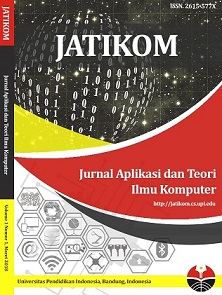Insight and Foresight: Mortality Trends Due to Malnutrition
Abstract
Malnutrition remains a significant global health problem, linked to a substantial proportion of child deaths worldwide. According to the United Nations, malnutrition is responsible for 45% of deaths in children under five. The World Food Programme estimates that over 820 million people globally suffer from hunger, with malnutrition playing a crucial role in this crisis. This study uses Python for data analysis and visualization, integrating time-series analysis and deep learning to forecast global malnutrition trends. The system processes data from 1970 to 2022, normalizes it, and trains a model comprising Conv1D and LSTM layers. The predictions are visualized using Plotly and displayed in a Flask web application, offering interactive features for exploring the data. The results highlight a notable decline in malnutrition-related deaths in both developing and developed nations, reflecting the success of previous interventions. However, developing countries continue to report a higher number of diseases and conditions associated with malnutrition, underscoring the need for further targeted interventions.
Keywords
Full Text:
PDFReferences
N. B. Tebeje, G. A. Bikes, S. M. Abebe, and M. E. Yesuf, “Prevalence and major contributors of child malnutrition in developing countries: systematic review and meta-analysis,” J Child Obes, vol. 2, no. 1, 2017.
World Food Programme, “Hunger, conflict, and improving the prospects for peace,” no. October, pp. 1–2, 2020.
World Health Organization/WHO, “Malnutrition,” www.who.int, 2020. [Online]. Available: https://www.who.int/news-room/fact-sheets/detail/malnutrition.
N. Mandela, “The slow violence of malnutrition,” South African Child Gauge 2020, p. 24, 2020.
R. Burgos, C. Joaqu’in, C. Blay, and C. Vaqué, “Disease-related malnutrition in hospitalized chronic patients with complex needs,” Clin. Nutr., vol. 39, no. 5, pp. 1447–1453, 2020.
U. Nations, “Take action for the sustainable development goals,” www.un.org, 2024. [Online]. Available: https://www.un.org/sustainabledevelopment/sustainable-development-goals/.
D. Ahmad, M. Afzal, and A. Imtiaz, “Effect of socioeconomic factors on malnutrition among children in Pakistan,” Futur. Bus. J., vol. 6, pp. 1–11, 2020.
C. Janiesch, P. Zschech, and K. Heinrich, “Machine learning and deep learning,” Electron. Mark., vol. 31, no. 3, pp. 685–695, 2021.
DOI: https://doi.org/10.17509/jatikom.v7i2.72389
Refbacks
- There are currently no refbacks.
Copyright (c) 2024 Universitas Pendidikan Indonesia (UPI)

This work is licensed under a Creative Commons Attribution-ShareAlike 4.0 International License.
JATIKOM is published by Universitas Pendidikan Indonesia
Jl. Dr. Setiabudhi 229 Bandung 40154, West Java, Indonesia
Website: http://www.upi.edu













